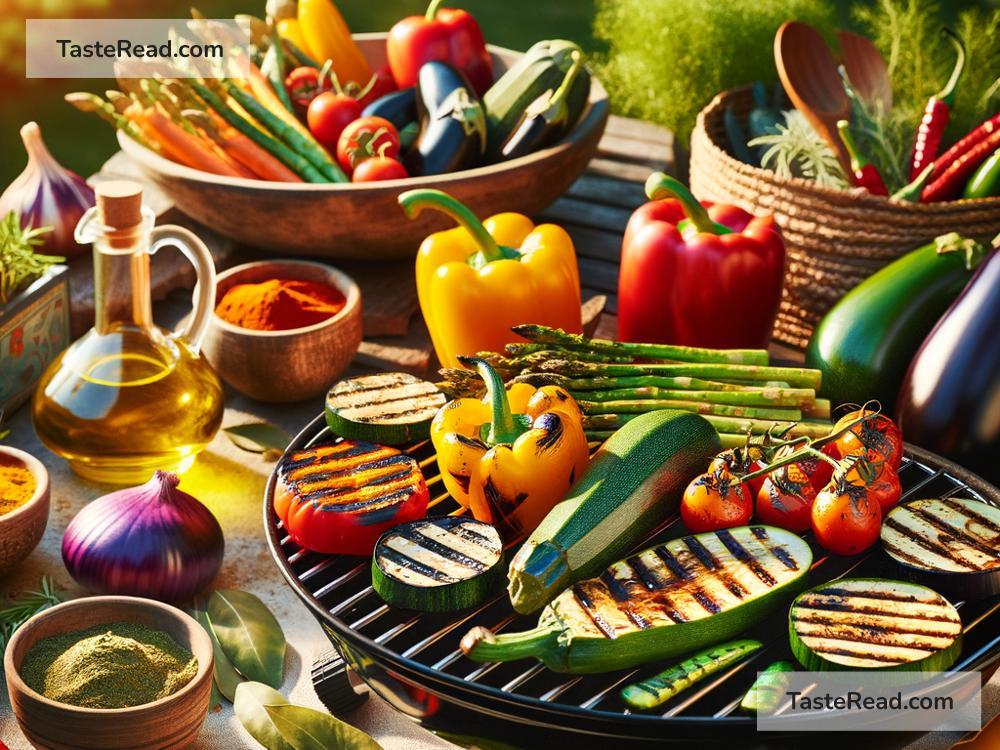How to Make Perfectly Grilled Vegetables: A Simple Guide
Grilled vegetables are an excellent addition to any meal. They are flavorful, healthy, and easy to prepare once you know the basics. Whether you’re hosting a summer barbecue or looking for a quick side dish, perfectly grilled vegetables can steal the show. This simple guide will teach you everything you need to know to make vegetables taste amazing on the grill.
Why Grill Vegetables?
Grilling vegetables brings out their natural sweetness and adds a smoky, charred flavor that’s hard to achieve with other cooking methods. The high heat caramelizes the sugars in the vegetables, making them taste more vibrant and delicious. Plus, grilling is a healthy way to cook since it requires little to no oil, and you can avoid heavy seasoning while still getting incredible flavors.
Choosing the Right Vegetables
Almost all vegetables can be grilled, but some hold up to the heat better than others. Here are some of the best vegetables to grill:
– Bell Peppers: Sweet and smoky when grilled.
– Zucchini and Summer Squash: Softens quickly on the grill and develops great flavor.
– Mushrooms: Deep, earthy taste—great for skewers.
– Corn on the Cob: A summer classic with irresistible charred kernels.
– Eggplant: Creates a creamy texture when grilled.
– Asparagus: Thin and quick-cooking, perfect for grilling.
– Onions: Sweet and caramelized with a touch of smokiness.
Feel free to experiment with other vegetables like carrots, broccoli, or even leafy greens like kale (just use a grilling basket for small or delicate veggies).
Preparing Vegetables for the Grill
The key to perfectly grilled vegetables starts with proper preparation. Follow these simple steps:
1. Wash and Dry: Rinse your vegetables thoroughly to remove dirt or debris, then dry them with a kitchen towel to ensure they grill evenly.
2. Cut Carefully: Cut vegetables into even sizes so they cook at the same rate. For example, slice zucchini into thin rounds or lengthwise strips, quarter peppers, and leave smaller vegetables like mushrooms whole.
3. Marinate or Season: Grilled vegetables don’t need much seasoning to shine, but adding a little olive oil, salt, and pepper enhances their flavor and prevents sticking. You can also use marinades with garlic, lemon juice, balsamic vinegar, or herbs for an extra kick.
Prepping the Grill
Before you start grilling, make sure your grill is clean and ready. A clean grill prevents vegetables from sticking and improves their taste.
- Preheat the Grill: Turn on your gas grill or prepare charcoal until it reaches medium-high heat. Grilling on a hot surface helps vegetables develop beautiful char marks without becoming soggy.
- Oil the Grates: Use tongs to rub a paper towel dipped in oil over the grates. This step is crucial to prevent sticking.
How to Grill Vegetables
Grilling vegetables is straightforward, but attention to timing and technique matters.
- Direct Grilling: Place vegetables directly onto the grates for larger pieces like bell peppers or zucchini. Make sure they’re spaced out evenly to allow each piece to cook properly.
- Use Skewers or a Grill Basket: For smaller vegetables like cherry tomatoes or thin asparagus, use skewers or a grill basket to keep them from falling through the grates.
- Turn Regularly: Flip or rotate the vegetables half-way through cooking to ensure even grilling on both sides.
Cooking Times for Common Vegetables
Different vegetables cook at different rates. Here’s a quick guide:
– Bell Peppers: 8–10 minutes
– Zucchini/Squash: 5–7 minutes
– Mushrooms: 6–8 minutes
– Corn on the Cob: 10–15 minutes
– Eggplant: 7–10 minutes
– Asparagus: 4–6 minutes
Keep an eye on your vegetables, as grilling time may change based on their thickness and your grill’s heat. You want them tender but still slightly firm—not mushy.
Tips for Perfectly Grilled Vegetables
- Don’t Overload the Grill: Give vegetables space to cook evenly. Crowding them can lead to steaming rather than grilling.
- Leave the Lid Open: Unlike grilling meat, vegetables cook better with the lid open because it helps control the direct heat.
- Test for Doneness: Poke the vegetables with a fork or skewer—they should be tender but not falling apart. If they’re too firm, let them cook a bit longer.
- Add Fresh Herbs or Cheese: After grilling, sprinkle vegetables with fresh herbs like parsley or basil, or add a touch of grated Parmesan for extra flavor.
How to Serve Grilled Vegetables
Grilled vegetables are incredibly versatile. You can serve them as a side dish to grilled meats, mix them into salads, or use them as a topping for pizzas and sandwiches. They are also perfect on their own with a drizzle of balsamic glaze or a squeeze of fresh lemon.
Got leftovers? They’re great for meal prep! Store extra grilled veggies in an airtight container in the refrigerator, and use them in wraps, rice bowls, or pasta dishes throughout the week.
Grilling vegetables is not only easy but also a delicious way to enjoy fresh produce. With the right preparation, cooking technique, and seasoning, you can make perfectly grilled vegetables every time. So fire up your grill, gather your favorite veggies, and get ready to impress your friends and family with this simple yet tasty dish!
Happy grilling!


